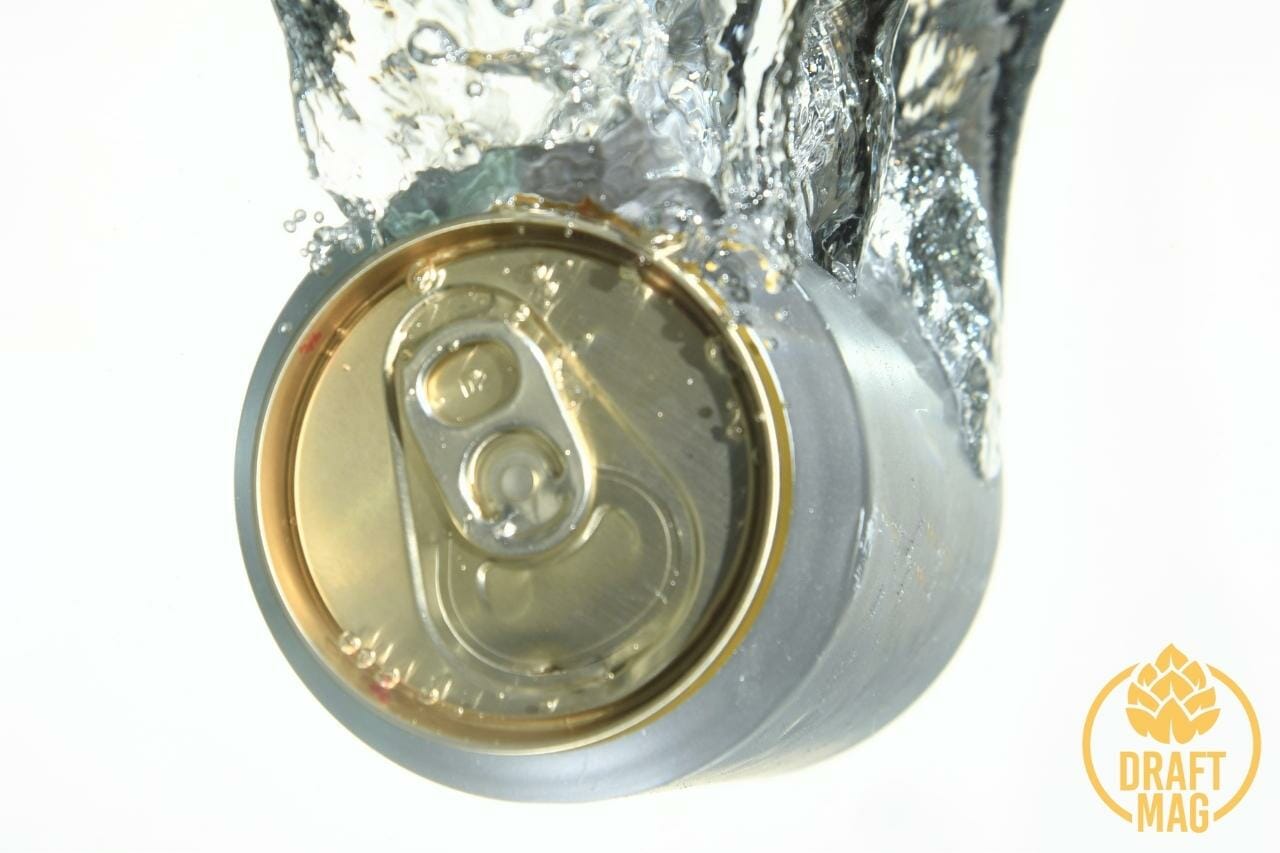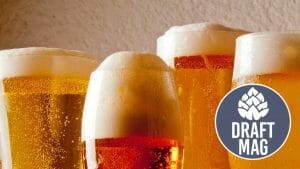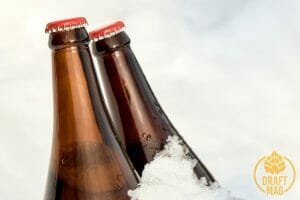Pabst Blue Ribbon Review: Read this before Buying Your Next Bottle
This Pabst Blue Ribbon review will answer all the questions new and veteran beer lovers have about PBR, including some interesting facts you may not know.

Is PBR just another name for bottom-shelf liquor disguised as beer?
Can it be brewed to stand on its own against its numerous competition, or is it best left alone, stashed away in dark corners of our shelf and minds? If you want to know more about PBR, this article is for you.
| Pros | Cons |
| High in carbs and calories | Off-taste after drinking |
| Quality ingredients | |
| Classic, timeless taste | |
| Nice flavor blends |
PBR Beer Highlights
PBR beer has been around for quite some time now and has developed a reputation that most breweries find difficult to shake off. It’s known as a cheap beer that satisfies you quickly and easily, yet beer drinkers can’t seem to get enough of it. Many people find themselves enjoying bottles after bottles in a single day.
Here are some reasons why PBR is still loved today:
- Over a century old
- Unique taste
- Same brewing style
- Contains vital nutritional elements
- Average alcohol ABV content.
- Delicious food pairings.
The Pabst Blue Ribbon company has been around for centuries. Beer was first brewed in 1844, but the company has passed through many owners over the years and yet has preserved the same taste till this day.
However, PBR beer still maintains its age-long brewing styles and recipes. Most importantly, you can pair the beer with different kinds of food.
Pabst Blue Ribbon Review: A Look Under the Hood
We’ll discuss all you need to know about Pabst Blue Ribbon beer and what the hype is about.
– PBR Ingredients: Is It the Same as the 1800s?
Like we mentioned earlier, the recipe has remained the same, even though Pabst Blue Ribbon has gone through so many owners in its lifetime. Pabst Blue Ribbon ingredients include water, barley malt, corn syrup, carbon dioxide, hops extract, and artificial flavor.
And then there’s its special ingredient: sea salt.
PBR beers are brewed with a mix of malted barley and low-fructose corn syrup hops, filtered water, and cultured yeast. Pabst makes their syrup from carbohydrates, dextrose, and maltose.
The simple sugars are fermented to get alcohol and carbon dioxide, while the carbohydrate contents in the beer give it a nice color and flavor. Since PBR beers are brewed with lots of barley, they aren’t gluten-free, and they don’t have any animal fat.
Pabst blue ribbon is one of America’s original premium beers, using an old recipe makes it attractive to beer lovers who want a taste of American culture in their pint. The company has managed to keep the 1800s beer culture with just a few variations in the preparation process.
– Pabst Blue Ribbon Taste: Is It Worth the Hype?
The taste of this classic beer lives up to the expectations as Pabst Blue Ribbon has a unique and rich taste. PBR is a must-try for every craft beer enthusiast. Hence, it leaves an aftertaste that some may like and others may not but can be compared to some sweetened brews. In short, PBR has a unique taste that sets the beer above its competition.

Pabst quickly became one of our favorite cheap beers after having sampled many more expensive offerings, such as Sam Adams and Guinness. We were able to ignore its stark difference from conventional offerings because of its smooth and full taste. However, you can tell that there was a tradeoff of freshness in favor of cheaper production costs.
Every time we reached for a can, we could have sworn we were drinking something special. If you want something different from your everyday beers, you should try PBR. No wonder why it still gets a cult following from beer enthusiasts, who often choose PBR over local and international brands.
Nutritional Information on PBR Beer: Should You Be Drinking PBR?
The total carbs (net carbs) in the beer is 22g per serving, and it has a fat composition of 260 calories. The total sugar level in a can of PBR beer is 6.8g, with a 20g sodium supplement.
A six-pack of PBR beer would have 600 calories and about 140 grams of carbs. There are only 7 grams of protein in that many beers.
However, you should note that your blood alcohol content could rise after drinking. It goes without saying that due to the high amount of calories in PBR, excess consumption of beer is unhealthy. Nonetheless, a moderate amount will help keep you fit and relaxed.
– PBR Alcohol Content: Too Much or Too Little?
Pabst Blue Ribbon alcohol content is neither excessive nor too small. Although the producer managed to keep within a medium range, many beer drinkers would tell you it leans towards the high side. However, the alcohol content seems to fall towards the higher side.
While other beers like Budweiser and Coors only contain 4.2 percent alcohol by volume (ABV), a regular 12 oz. can of PBR has an ABV of 5.9 percent. This is about average for a domestic beer but not quite up to par with some of its international competitors. For example, Guinness has an ABV of 4.2 percent and Heineken’s comes in at 5.0 percent
In a recent press release, Pabst announced a new product called PBR Extra. Unlike the other beer with a 5.9 percent ABV, PBR Extra will contain a 6.5 percent ABV. Aside from the original and extra beer types, including easy and nonalcoholic beers. The lighter lager – Easy – contains 3.4 percent ABV, while the Non-Alc is delicious and contains no alcohol.
Food pairings With PBR: Best Combos Ever
If you’re getting bored with your typical PBR, try drinking it with a meal. A strong, salty flavor like ham, pairs well with an average beer like PBR. A fruity cocktail like sangria also works well to complement the foamy beer for heavier drinking during the weekends, such as a sourdough bread sandwich or some salty pretzels.
Even waffles pair best with PBR when you plan to drink slowly. It gives you enough time to soak up some of the tasty PBR goodness while you enjoy slow and deliberate bites of the waffles. The sweet maple syrup will help balance out the slight bitterness from your beer.
Finally, desserts are an option as well for a great pairing experience for Pabst Blue Ribbon beer.
PBA’s Humble Origins: A Walk Down Memory Lane
The origin of Pabst Blue Ribbon beer dates back to the 18th century. Jacob Best originally produced the beer in Milwaukee, Wisconsin, in 1844. By 1893, Joseph Schlitz Brewing took over production and sold over 1 million barrels. The company has changed leadership and ownership for years, greatly improving production.
In 2010, Pabst Brewery Company brought back the original Pabst Blue Ribbon recipe after it had changed hands several times. Today, the beer still has the same smooth taste that it had when first brewed in 1844 and is available for purchase in many places around the US, including grocery stores, liquor stores, bars, and restaurants.
Keeping up With the Trends While Maintaining the Tradition
PBR beer has been in existence long enough to have lost its touch with the past trends. Naturally, most people expected some changes in the brewing methods after operating for centuries. Surprisingly, PBR has managed to keep the tradition going despite changes in trends and new styles for innovation. Even though they stick to their old standards, customers still seem satisfied.
Today, PBR has an almost cult-like following with its bars, festivals, and myths.
What is there left to be said about a beer that already says so much on its own?
The cans are legendary, which is the only reason why you may spot its drinkers drinker from an old school container.
If you want a classic beer with a modern touch, PBR is the perfect beer for you. Their slogan — Old Style Beer for Modern Times, says it all. Pabst Blue Ribbon constantly reminds its customers about the rich history of beer while ensuring that it meets the current needs and trends in today’s beer market.
FAQ
What makes Pabst Blue Ribbon unique?
Pabst Blue Ribbon is unique for its crisp taste, low bitterness, and affordable price, making it a favorite among beer drinkers since 1844.
Does Pabst Blue Ribbon have a metallic taste?
No, Pabst Blue Ribbon does not have a metallic taste. Its flavor profile is clean and refreshing, with a slight sweetness and hints of cereal grains.
Is Pabst Blue Ribbon best served colds?
Yes, Pabst Blue Ribbon is best served cold. Like most beers, it is recommended to be stored and served at a temperature between 38-45°F (3-7°C) to fully enjoy its refreshing taste and aroma.
Conclusion

If you’re looking for an ancient beer style or something different from your average beer, you should out a can of Pabst Blue Ribbon.
Despite being around for centuries, beer has managed to keep the brand name strong and maintain great quality and style.
Ribbon Pabst offers class, quality, tradition, and elegance all in a single package. Try PBR and get the full experience.






